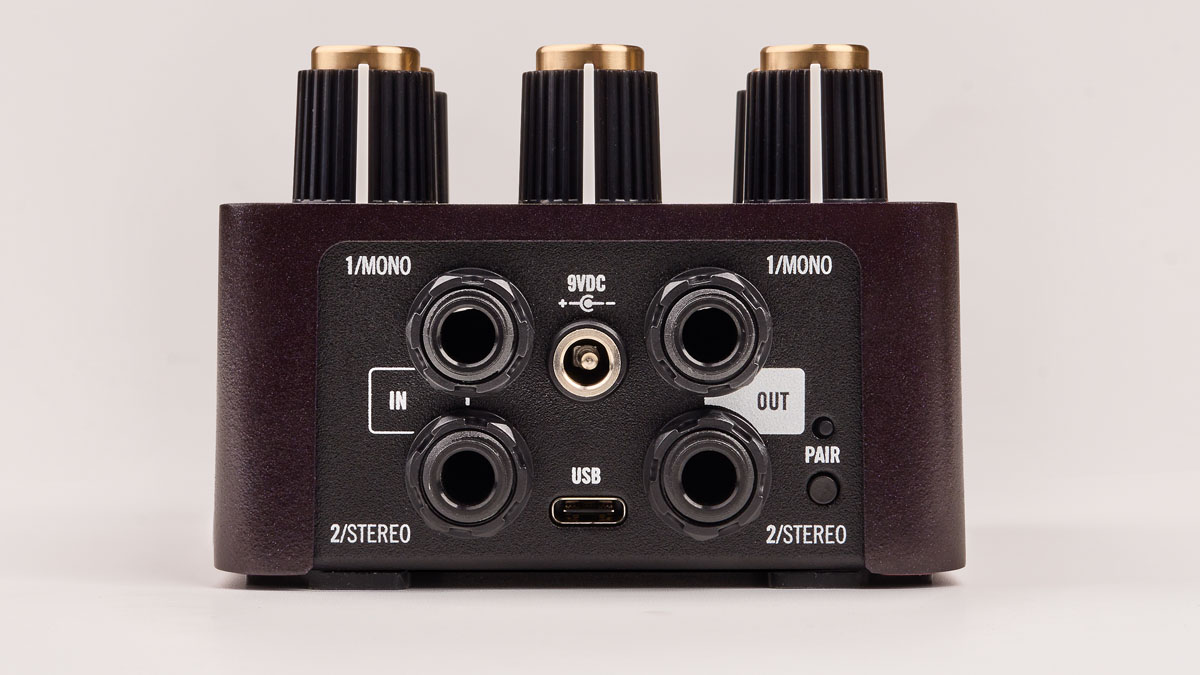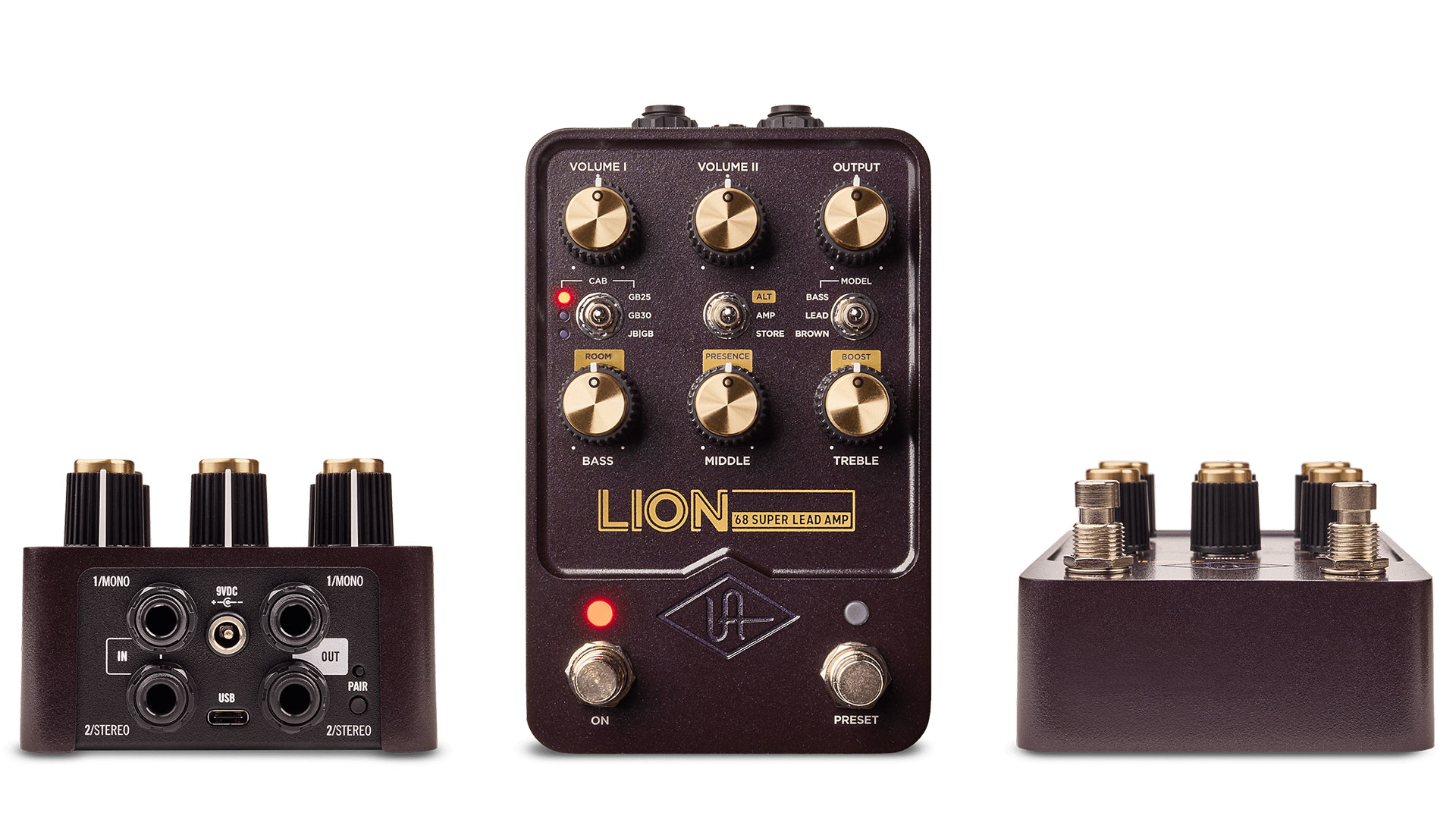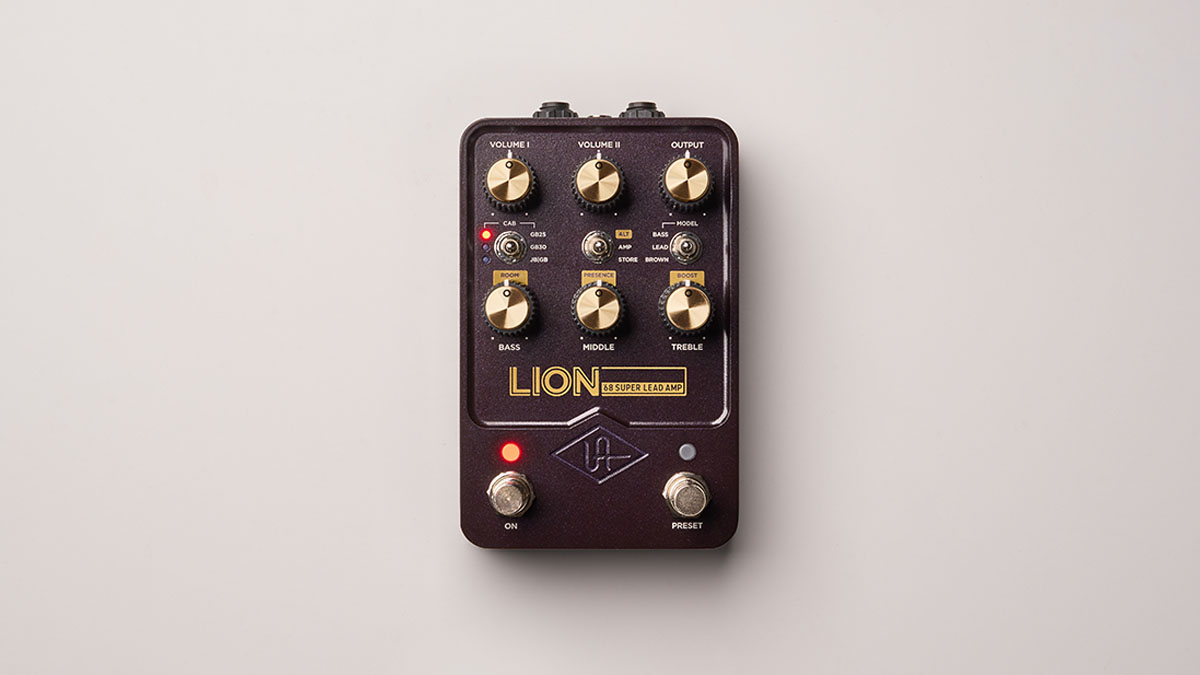
The Marshall JMP model 1959 Super Lead produced from the late ’60s through the early ’70s is a bucket list amp for many guitarists.
This was the guitar amp that defined the sounds of early hard rock, including Jimi Hendrix, Eric Clapton with Cream, Billy Gibbons with early ZZ Top, Van Halen, AC/DC, the Ramones (the latter two during their classic mid-to late-’70s era) and countless other acts. Unfortunately, obtaining the real deal is an unlikely prospect for all.
Still, for the most deep-pocketed collectors/hoarders, prices for an unmodified late-’60s JMP 1959 Super Lead now exceeds $10,000 – if you can even find one in the first place.
Over recent years, several boutique amps, pedals and amp modelers have done a damn good job of duplicating the tones of a classic Marshall Super Lead, but the new UAFX ’68 Lion Super Lead Amp pedal promises to deliver “the most authentic emulation of a 100-watt late-’60s Plexi head ever placed in a stompbox.”
UA actually understates its ambitions, as the Lion pedal provides emulations of three Plexi Marshall amps – a Super Lead, Super Bass and “Brown” (a not-so-subtle nod to Eddie Van Halen’s “holy grail” 1968 Super Lead with variac voltage reduction and bias adjustment).

The UAFX ’68 Lion features the same form factor as the company’s previous Dream, Ruby and Woodrow amp emulator pedals, providing six knobs, three toggle switches and two footswitches on its top panel.
Here, the controls mostly correspond with those found on a Marshall Super Lead: Volume I, Volume II, Bass, Middle, Treble, plus the addition of Output (overall volume level control).
The lower three knobs double as Presence, Room and Boost controls when the center toggle is in the “Alt” position (normal controls are engaged in the toggle’s Amp setting). The Boost function combines emulation of an Echoplex EP-3 preamp with gain that increases up to the 10 o’clock position where the control adds a Boss GE-10 graphic EQ emulation midrange boost curve (for mid-1978 EVH live flavor).
The Cab toggle provides Dynamic Speaker Modeling emulations of 4x12 cabinets loaded with vintage Celestion 25-watt Greenbacks, 30-watt Greenbacks or a combination of two 25-watt Greenbacks and two JBL D-120Fs that very likely was the combination Eddie Van Halen used when recording Van Halen’s debut album.
Additional 1x12 EV, 2x12 Celestion G12M-65 Creambacks and 4x12 Celestion Vintage 30 models are available after registering the product. Speaker emulation can also be bypassed altogether. The toggle switch on the right engages Super Bass, Super Lead or Brown settings.
Other key features include mono/stereo ¼-inch inputs and outputs and a USB-C jack for downloading firmware updates via the UA Connect desktop computer app. The pedal communicates with a mobile iOS or Android device and the UAFX Control Mobile app via Bluetooth to provide access to deeper editing functions and access factory and artist presets.

Because Lion is a true amp emulator that also includes speaker emulation, it sounds best connected to a live mixing console or a digital audio recording interface. If you prefer to use it with a standard guitar amp, I recommend bypassing the amp’s preamp section by plugging the Lion’s output into the amp’s effects loop return jack only and bypassing the speaker emulation.
Does Lion live up to its promise of delivering the “most authentic emulation of a 100-watt late-’60s Plexi head ever”? For me, it’s a definitive “yes.” The tones are very harmonically rich, with roaring mid-range crunch, gut-walloping bass and crystalline, cutting treble, plus dynamic responsiveness and feel that is just like driving a Plexi Super Lead flat out, but accessible at lower volume levels – and won’t cause permanent ear damage. Pardon my French, but this is “the shit.”
I did initially encounter a few glitches when switching between the preset and standard settings, but this was fixed with a firmware update (so make sure to always check for updates).
The tone stack is truly a replica of that of a vintage Marshall, so it has the same limitations but also the same desirable sweet spots. One cool feature of note is that the Volume I and Volume II controls are simultaneously active, so the pedal functions like a Marshall head with a jumper cable connecting the treble and normal channels.
Specs

- PRICE: $399 / £379
- TYPE: Amp emulation pedal
- CONTROLS: Volume I, Volume II, Output, Bass/Room, Middle/Presence, Treble/Boost
- SWITCHES: Cab (off, GB25, GB30, JB/GB), Alt/Amp/Store, Model (Bass, Lead, Brown), Live on/off footswitch, Preset on/off footswitch (the footswitches can also be set to boost/live-preset and four-cable modes)
- JACKS: Input Mono, Input Stereo, Output Mono and Output Stereo ¼-inch, USB-C
- CONTACT: Universal Audio







